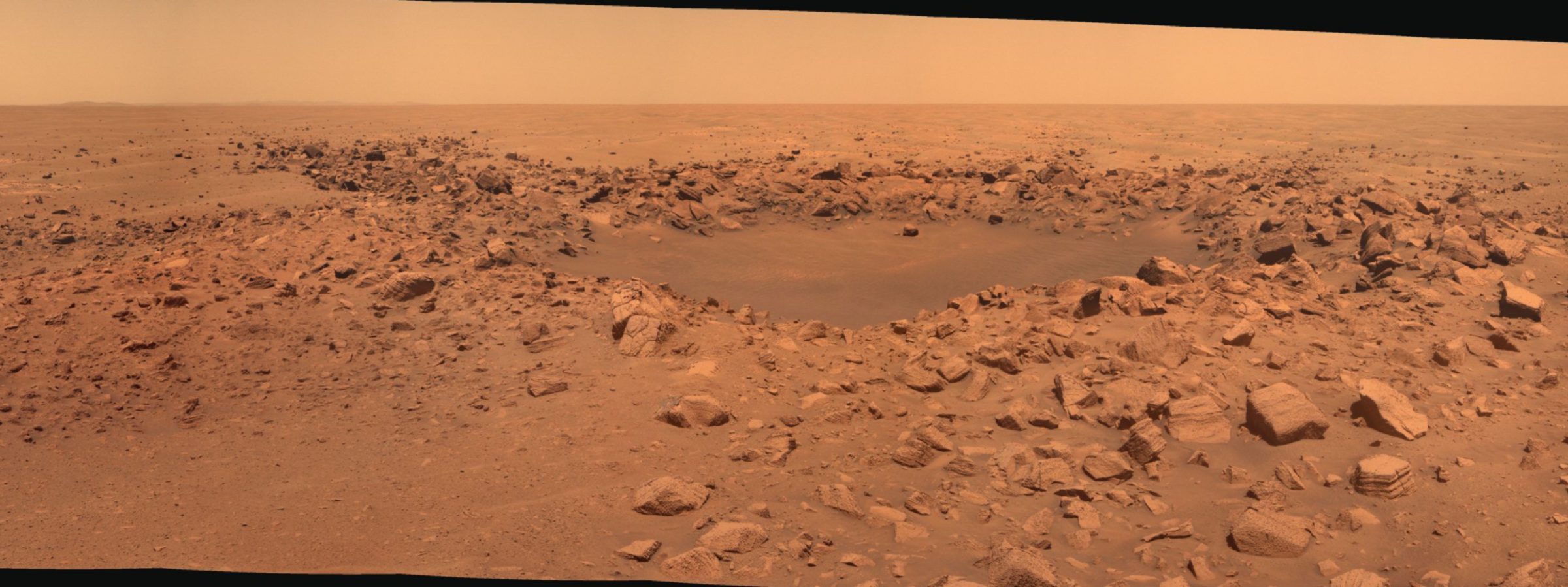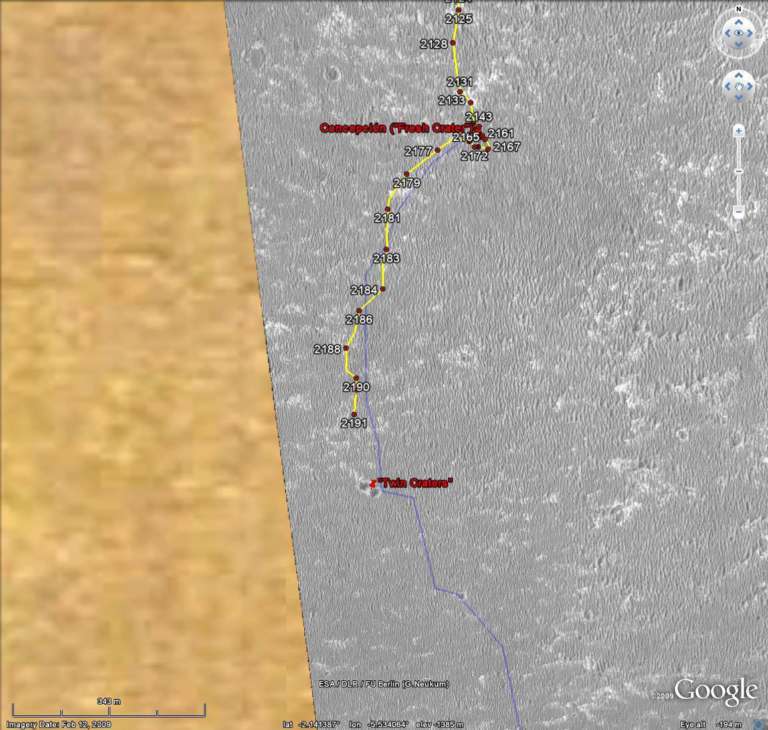Emily Lakdawalla • Mar 24, 2010
Opportunity at Concepción from orbit
I saw this image at the Lunar and Planetary Science Conference so am happy they released it: a view of Opportunity sitting on the north rim of the little, fresh Concepción crater, taken on sol 2153 (February 13, 2010). When Matt Golombek showed this photo during a talk in which he was explaining how they determined Concepción to be the youngest crater Spirit or Opportunity has seen on Mars, he made a joke about how Opportunity is clearly superposed on the sand dunes, so is the stratigraphically youngest thing in the scene!

Here's a zoomed-in view, magnified 2x. Hi, Opportunity!

One interesting thing Opportunity learned during her visit to Concepción is why the rays appear dark in orbital images. It would be natural to assume that the rays appear dark because they are made of material that is darker than the dunes. In fact, the reverse is true: the dunes at Meridiani are very dark sand indeed, and the rays observed by Opportunity are actually blocks of bedrock that are much lighter than the dunes. (You can see bedrock peeking through the dunes to the left of Concepción in the images above, and note how bright it is relative to the sand.) So why do the rays look dark from orbit?

It's because of topography. The rays are made of sharp blocks of rock. Mars Reconnaissance Orbiter flies over the landscape in the afternoon. The blocks of rock cast dark shadows. The individual blocks and their shadows are mostly too small for HiRISE to see, so the overall effect of bright rocks mixed with dark shadows is the appearance of dark crater rays.
It just goes to show how photographs can sometimes be misleading. Even when an interpretation seems obvious -- crater rays are dark because they're made of dark material -- the truth may be quite different.
Opportunity left Concepción two weeks ago and has been making fantastic progress in further drives south. An update from JPL yesterday indicates that the six-year-old rover is still being taught new tricks; new flight software is enabling the rover to automatically choose targets of interest for imaging in the middle of drives, which should increase the science returned from these long, long traverses.
The latest route map update from Eduardo Tesheiner shows the rover is quickly approaching another interesting crater -- actually a twin crater, an overlapping pair likely made simultaneously by a meteor that split into two pieces as it descended through Mars' atmosphere. It's not nearly as fresh as Concepción, though, so I can't imagine Opportunity will hang around there as long.

It's time to put the pedal to the metal! Opportunity blew through the 20-kilometer mark on her odometer yestersol, but there's still another 12 kilometers of driving in front of her before she reaches the rim of Endeavour crater. The rover is achieving about 60 meters of distance per driving sol these days, even though her power's a bit limited by the approaching winter solstice.
Let’s Go Beyond The Horizon
Every success in space exploration is the result of the community of space enthusiasts, like you, who believe it is important. You can help usher in the next great era of space exploration with your gift today.
Donate Today

 Explore Worlds
Explore Worlds Find Life
Find Life Defend Earth
Defend Earth

